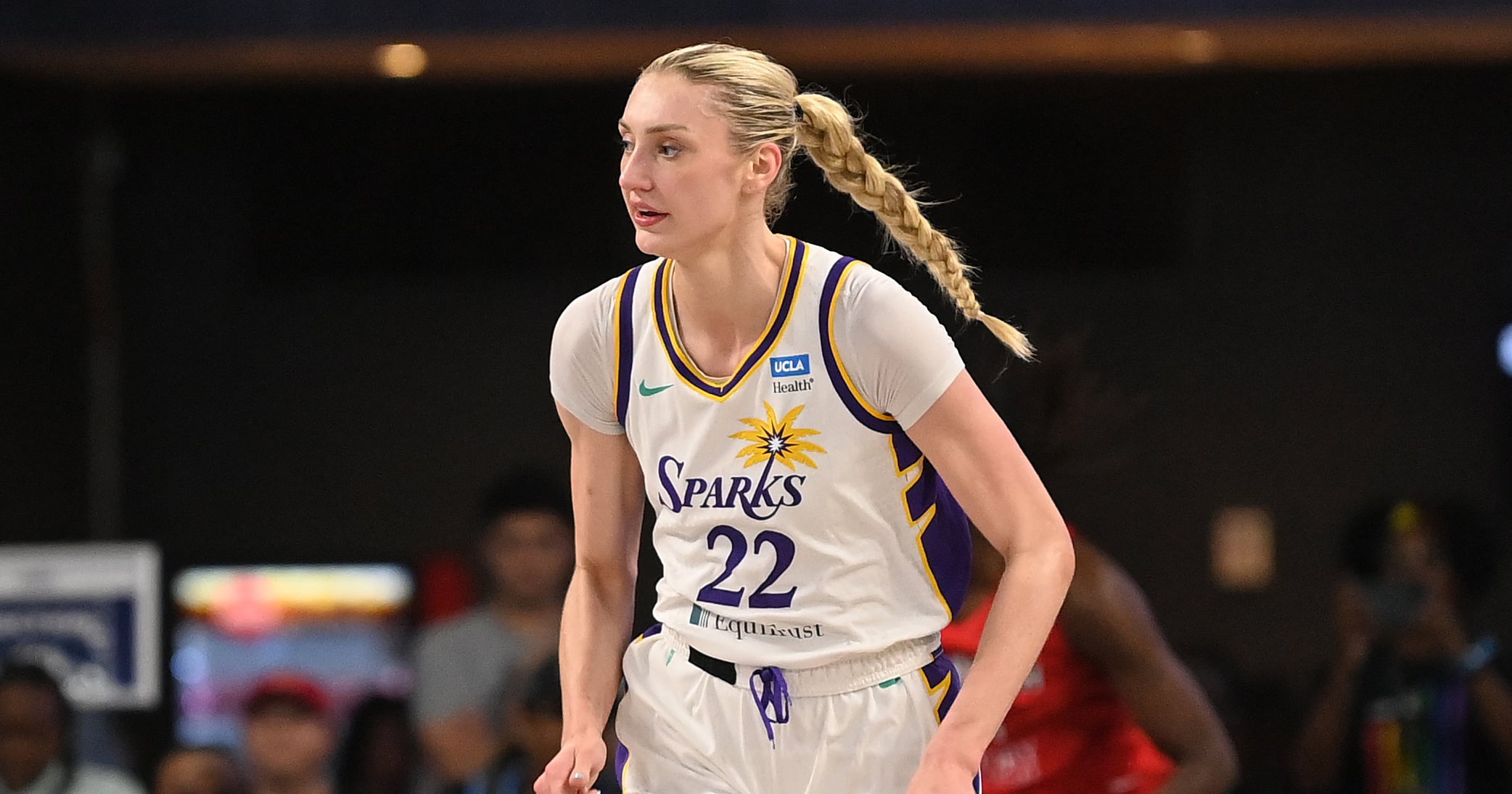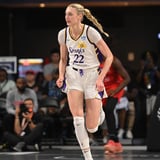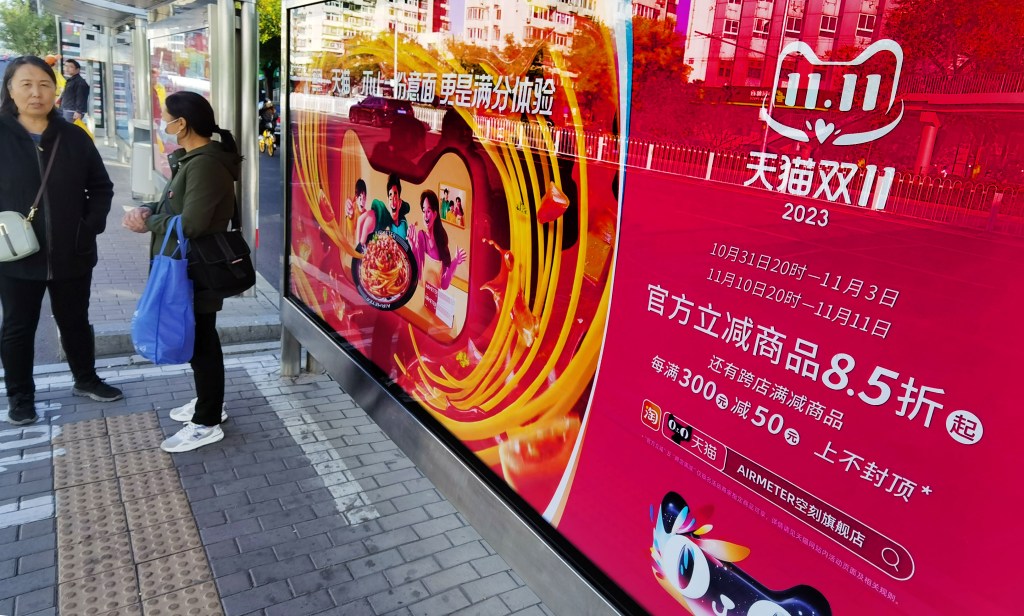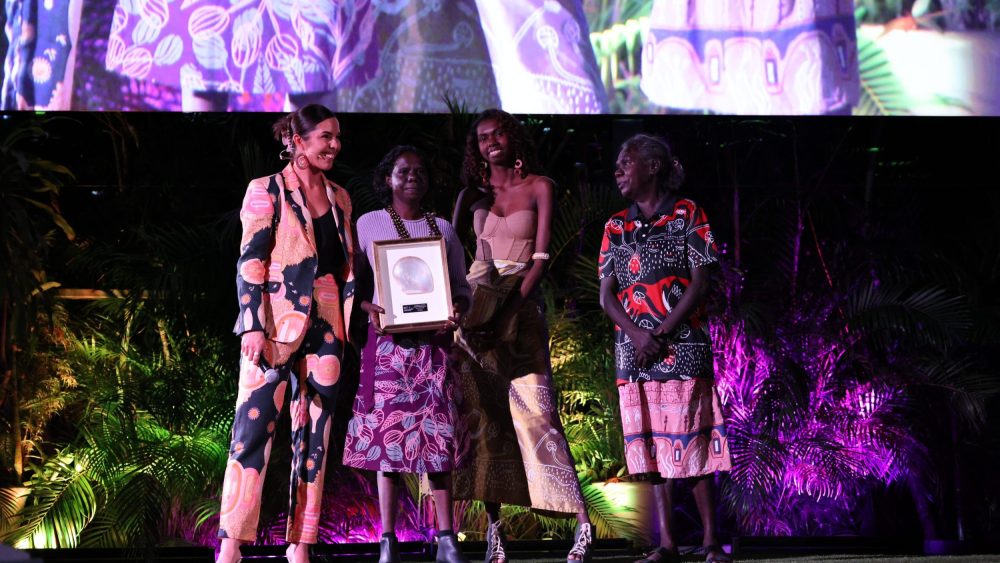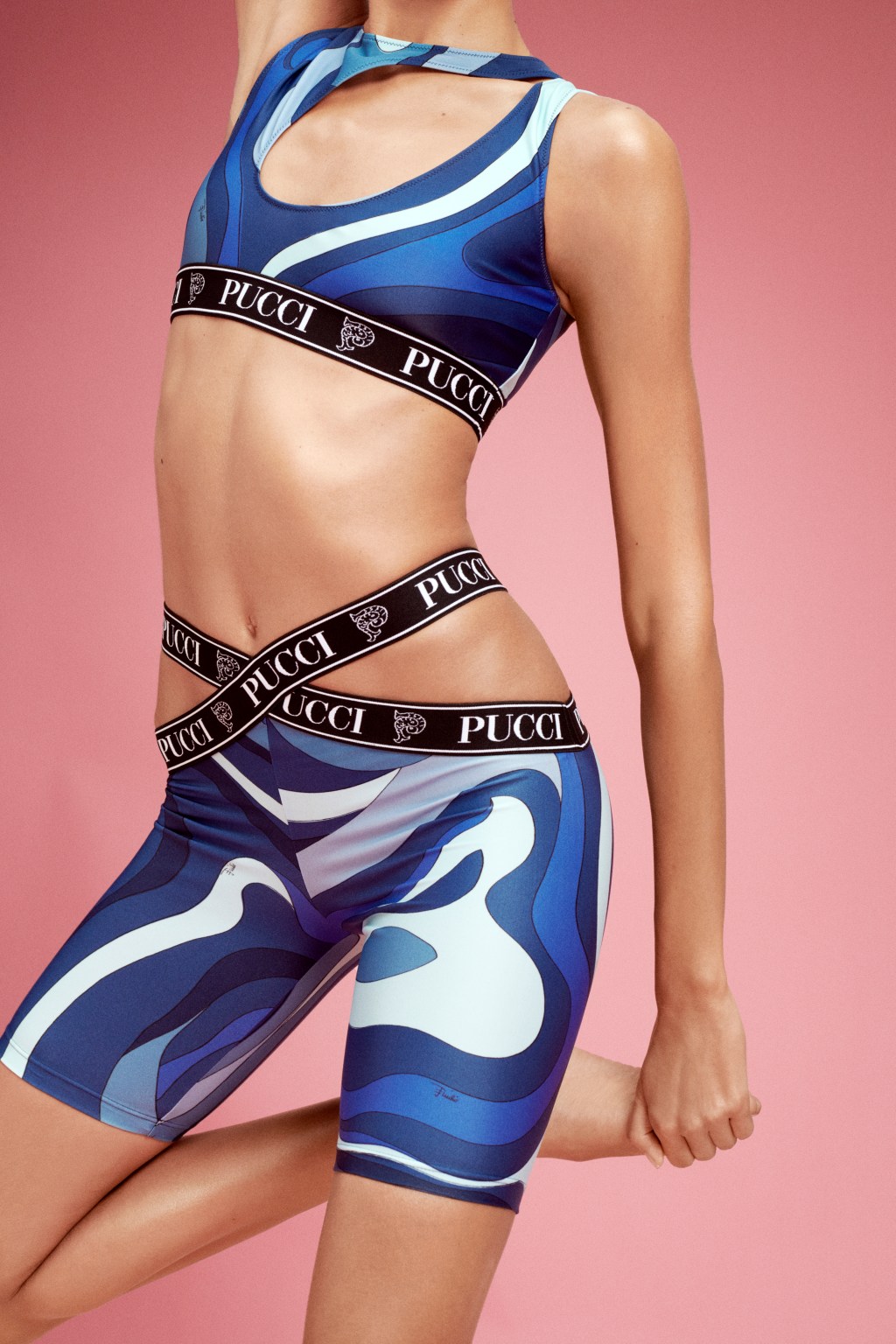In June, Cameron Brink’s incredible rookie season was cut short due to an ACL tear. The Los Angeles Sparks forward was the number two pick of the WNBA draft and had recently been selected to play on Team USA’s four-member 3×3 basketball team at the Paris 2024 Games – but her injury means she’ll be sidelined for the foreseeable future.
In an Instagram posted shortly after the injury, Brink wrote: “You never think it will happen to you. And despite all the hard work sometimes it does.” But experts may not be so surprised by the news that yet another top woman athlete has had her playing time derailed by an ACL tear. Women are two to eight times more prone to the injury than men, according to a 2016 study in the Journal of Orthopaedics. A 2022 study in the Orthopaedic Journal of Sports Medicine looked at the past 20 years of injury data and found that ACL tears accounted for 37 percent of total knee injuries, making it the most common type of clinically significant knee injury. Additionally, it took players an average of 375 days to return to play after suffering one.
The anterior cruciate ligament (ACL) runs diagonally in the middle of the knee and works alongside other ligaments to connect the thigh bone and shinbone. Women and girls who play basketball, but also soccer (Megan Rapinoe has endured three ACL tears), lacrosse, and field hockey in high school and college are particularly vulnerable to tears. (You don’t have to play professionally to be susceptible. Actor Aubrey Plaza recently tore her ACL during a game of knockout before the WNBA All-Star Game this month; Brink commented on Plaza’s Instagram post about the injury, “Hot girls have bad knees.”)
While some attribute the lopsided occurrence to biology, there are also structural issues regarding research into women’s health as well as support for women’s sports, even at the highest levels – including chartered flights or first-class travel, quality and depth of medical and training resources, pay discrepancies, and miscellaneous inequities, such as women soccer players historically being relegated to playing on artificial turf – that can exacerbate injuries.
While doctors can operate on a torn ACL, it’s still a long road to recovery – at least six to nine months. And the injuries carry an increased risk of osteoarthritis (often within 10 years), with the reported incidence of osteoarthritis as high as 87 percent after an ACL injury.
While Brink writes on Instagram that she hopes recovering from her injury will “only make me stronger,” the road ahead will be difficult. Kristie Mewis, a midfielder for the NWSL’s Gotham FC, called recovering from her 2018 ACL tear “one of the hardest things I’ve ever done.”
“It’s getting more competitive or playing more games,” she told NBC Sports Bay Area about the ramped-up demands of the sport. “Everyone needs to really stress the importance of recovery, stress the importance of strength, there’s so much prehab and rehab that you can do to get ready to train every single day.”
Many experts – even surgeons – agree that prevention is the priority. Andrew D. Pearle, MD, chief of sports medicine at the Hospital For Special Surgery in New York City and team physician for the New York Mets, has recently launched an app with HSS and the Aspen Institute, RIIP REPS, to provide a seven-minute daily training program for coaches to integrate into warmups to help prevent injury.
Dr. Pearle told PS why young women athletes are at such high risk for these injuries, how to prevent them, and which changes to sports culture could help protect players.
Experts Featured in This Article
Andrew D. Pearle, MD, chief of sports medicine at the Hospital For Special Surgery in New York City and team physician for the New York Mets.
PS: Why should we care about ACL injuries?
Andrew Pearle: Because it’s a very common and devastating knee injury, particularly in young women. And the downstream effects of it are not often talked about or understood.
“[W]hat people don’t realize is that the destiny of your athletic career life span is changed.”
If you’re a female high school soccer player and you play year-round, you’ve got a 16 to 18 percent chance of tearing your ACL – almost one in five. The number two riskiest sport is basketball and then lacrosse. So if you’re an athlete playing basketball, lacrosse, soccer, you’ve got a 10 to 12 percent chance of tearing your ACL in high school. It’s common in almost any team sport where there’s a lot of change in direction: cutting, landing, stopping, decelerating hard. It tends to happen in a noncontact but contested fashion. So if you’re playing soccer and you’re coming up to defend somebody and they make a move on you and you have to change direction suddenly, you’re a little bit off balance, that’s when these injuries happen.
They’re pretty devastating. We’ve gotten great at fixing ACLs. We have about a 70 to 80 percent chance of getting people back on the athletic field. That’s good, but it’s not perfect. It’s not like you’re perfect after ACL reconstruction; there’s a chance that you may not play cutting sports again, and if you do, there’s a one in five chance that you’re going to have a second ACL injury (eight percent chance on the same knee and a 12 percent chance in the other knee). Then the most depressing stat is: depending on what study you read, there’s a 50 to 100 percent chance that girls will develop arthritis in their 30s if they tear their ACL in high school. We think that number is probably 50 to 70 percent.
Imagine you work your butt off to be an athlete in high school and your reward is: you’re a 30-year-old with arthritis, and you can’t play pickleball, you can’t run, you can’t do even old-people sports because you’ve got a bum knee.
People don’t think about [that]. They think, “Oh, it’s terrible. If you tear your ACL, it’s nine months, it can put a dent in your high school career, but people get back and do incredible things.” And that’s true within the majority of cases, but what people don’t realize is that the destiny of your athletic career life span is changed.
PS: Why are women more prone to them?
AP: We don’t really have a perfect explanation.
Some think it’s hormonal, what phase of the cycle women are in when they’re playing, although that data is very, very mixed. People have talked about alignment – women tend to have a bigger “Q angle” between their pelvis, their knee, and their foot. So they tend to be a little bit more knock-kneed. If you land in this knock-kneed posture (knees buckled in), that puts a lot of load on the ACL.
Another concept is that muscle development is a little bit different; women tend not to have as strong glutes and hamstrings. Women tend to be a little bit more loose-jointed. There is an association between ligament laxity or loose jointedness and ACL tears.
The last thing, there may be morphologic differences that may drive load to the ACL in the female knee. We’re actually studying that a lot in our lab.
Match congestion is a real thing. Women are nine times more at risk to tear their ACL when they’re playing in a game than when they’re practicing. All these youth leagues and organizations that have huge numbers of tournaments and games, it just becomes a math problem. In every game, you’ve got a small risk, but the risk adds and adds and adds as you play more and more games.
“[M]aybe we should consider limiting the number of games we expose our kids to.”
People didn’t tear their ACL during COVID, because they weren’t playing sports. I’m not saying people shouldn’t play sports. But maybe we should consider limiting the number of games we expose our kids to. It’s not realistic. If you’re a professional athlete, you wouldn’t have to play the number of games that high school kids often play. It’s kind of crazy that we protect our professional athletes, and even our college athletes, but our high school athletes have to play and play and play sometimes just to get into school. So there’s a whole issue there.
PS: So how do we prevent these injuries?
AP: We can prevent anywhere from 50 to 80 percent of ACL injuries, at least in high school and middle school.
It’s 30 to 50 percent in the college age groups, but still very significant. Injury prevention programs (such as the PEP Program) don’t just prevent ACL injuries, they reduce all time loss from injury by a third. And they improve performance by improving agility. So it’s a wonderful thing.
PS: When you say all time loss, are you talking about across the body? Or from the ACL injury?
AP: Across the body – ankle sprain, concussions. We call it neuromuscular training [and some call it plyometrics], exercises that rehearse athletic movements that are essential to the sport. So if you think about soccer – stopping on a dime, changing direction, landing, jumping, these exercises break down and work on perfecting, optimizing those movements, so that you move as powerfully, explosively, and safely as possible.
For example, doing a perfect air squat, or a perfect single-leg squat, or perfect skater hop, those movements allow an athlete to rehearse how you’re going to cut and how you’re going to stop, but efficiently. The key is feedback. You don’t want to just pound out 50 air squats – you need to do it so that you’re getting feedback and creating muscle memory so that your body moves as efficiently as possible. Feedback can be a coach or trainer giving you corrective information. We’ve developed an app that has cues. (The app is directed toward coaches, but anyone can use the sample workouts.)
So all this strength training and speed training, all that should be layered onto neuromuscular training, which ought to be the foundation. It’s not part of the culture of sports right now.
– Additional reporting by Mirel Zaman
Soo Youn is a journalist who covers pop culture, business, gender, and technology. She has worked at Reuters and ABC News and has written for PS, The Washington Post, The New York Times, The Guardian, NBC News, Teen Vogue, and other publications. She’s particularly interested in global cultural movements like K-pop fandoms and loves to find stories that show how the world is shifting.
Mirel Zaman is the health and fitness director at PS. She has nearly 15 years of experience working in the health and wellness space, writing and editing articles about fitness, general health, mental health, relationships and sex, food and nutrition, astrology, spirituality, family and parenting, culture, and news.
